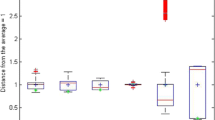Abstract
-
DOI: http://dx.doi.org/10.1065/lca2006.04.014
Background, Aims and Scope
In the life cycle of a product, emissions take place at many different locations. The location of the source and its surrounding conditions influence the fate of the emitted pollutant and the subsequent exposure it causes. This source of variation is normally neglected in Life Cycle Impact Assessment (LCIA), although it is well known that the impacts predicted by site-generic LCIA in some cases differ significantly from the actual impacts. Environmental impacts of photochemical ozone (ground-level ozone) depend on parameters with a considerable geographical variability (like emission patterns and population densities). A spatially differentiated characterisation model thus seems relevant.
Methods
and Results. The European RAINS model is applied for calculation of site-dependent characterisation factors for Non-Methane Volatile Organic Compounds (NMVOCs) and nitrogen oxides (NOx) for 41 countries or regions within Europe, and compatible characterisation factors for carbon monoxide (CO) are developed based on expert judgement. These factors are presented for three emission years (1990, 1995 and 2010), and they address human health impacts and vegetation impacts in two separate impacts categories, derived from AOT40 and AOT60 values respectively. Compatible site-generic characterisation factors for NMVOC, NOx, CO and methane (CH4) are calculated as emission-weighted European averages to be applied on emissions for which the location is unknown. The site-generic and site-dependent characterisation factors are part of the EDIP2003 LCIA methodology. The factors are applied in a specific case study, and it is demonstrated how the inclusion of spatial differentiation may alter the results of the photochemical ozone characterisation of life cycle impact assessment.
Discussion
and Conclusions. Compared to traditional midpoint characterisation modelling, this novel approach is spatially resolved and comprises a larger part of the cause-effect chain including exposure assessment and exceeding of threshold values. This positions it closer to endpoint modelling and makes the results easier to interpret. In addition, the developed model allows inclusion of the contributions from NOx, which are ne- glected when applying the traditional approaches based on Photochemical Ozone Creation Potentials (POCPs). The variation in site-dependent characterisation factors is far larger than the variation in POCP factors. It thus seems more important to represent the spatially determined variation in exposure than the difference in POCP among the substances.
Similar content being viewed by others
Author information
Authors and Affiliations
Corresponding author
Rights and permissions
About this article
Cite this article
Potting, J., Hertel, O., Schöpp, W. et al. Spatial Differentiation in the Characterisation of Photochemical Ozone Formation: The EDIP2003 Methodology. Int J Life Cycle Assessment 11 (Suppl 1), 72–80 (2006). https://doi.org/10.1065/lca2006.04.014
Received:
Accepted:
Published:
Issue Date:
DOI: https://doi.org/10.1065/lca2006.04.014




